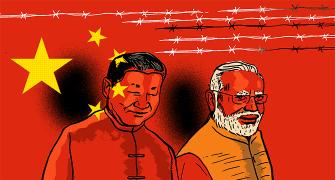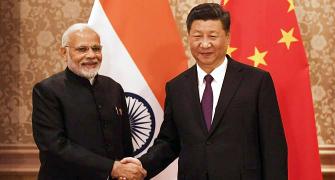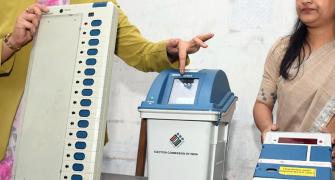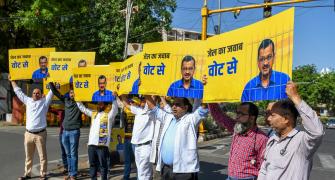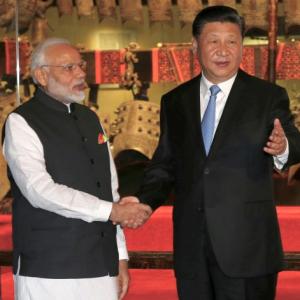'Since the bilateral deficit is a reality -- and a worry -- we need to find a way to deal with it,' says Ravi Bhoothalingam.
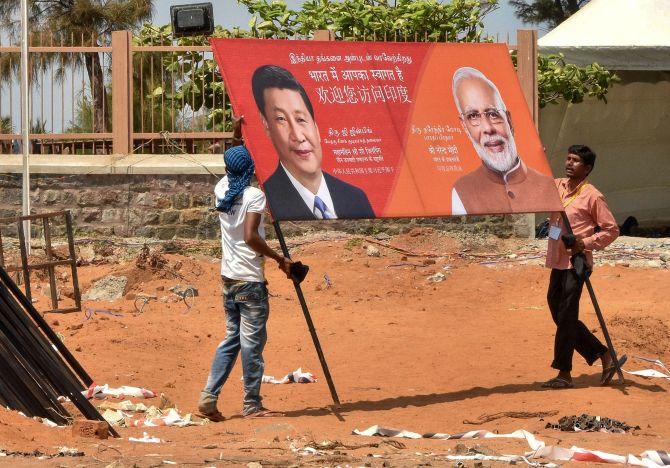
Would not all-round economic engagement between China and India be in the mutual interest of both nations?
Most of the discussion in India on economic relations with China is focused on short-term trade and investment issues. But huge mutual benefits are possible in the medium and long-term if the two countries can strategise and develop expanded and deeper linkages.
Whilst China is India's largest bilateral trade partner ($100 billion in 2018-2019, having grown from a mere $2 billion in 2002), Sino-Indian trade relationship is still modest -- even lower than that between China and Vietnam.
China and India invest very little in each other -- official cumulative investment from China in India is about $8 billion to date -- though there is increasing Chinese interest in Indian brownfield projects, particularly in the digital e-commerce space.
Two-way tourism amounts to just over a million persons -- a minuscule fraction of China's 100 million-plus outbound tourists, or of India's 18 million. As these figures reveal, the overall India-China canvas of engagement is narrow.
Further, over the years, India has persistently run a bilateral trade deficit with China, which now (2018-2019) amounts to $58 billion -- a reduction of $5 million over the last year.
The deficit causes political worry in India, even though trade or balance of payments figures are usually evaluated not in bilateral terms, but as an overall national picture. But since the bilateral deficit is a reality -- and a worry -- we need to find a way to deal with it.
India's exports to China consist predominantly of commodities and raw materials such as iron ore. Whilst India is not yet competitive in many value-added exports, there are areas such as IT and pharmaceuticals where we do have advantages.
As one example, the price of several Indian generic drugs is well below what the Chinese pay for their medicines, so a compelling case can be made that targeted Indian generic exports will help China reduce healthcare costs for its people.
Dying to Survive -- a popular Chinese film -- depicts the true story of a man who smuggled anti-leukemia generic drugs from India to help over 1,000 Chinese patients. Convicted of the offence, he was released following an outcry in the social media.
Since India imports Chinese drug intermediates (APIs) for many of its formulations, the Chinese API business is a natural ally to support the entry of India's generics into China. Strange, but true.
Inbound tourism from China -- a relatively low-hanging fruit -- can also reduce the bilateral deficit, since tourism is an 'invisible export'.
How to attract Chinese tourists is well-known but not yet implemented: Simplified visa procedures, a stock of Mandarin-speaking tour guides, and imaginative tourism offers specially crafted for the Chinese outbound tourism market.
Also, increased and more convenient flight connections, and the ability for tourists to pay using WeChat or Alipay. Above all, a creative communication strategy in China's social, print and TV media, presenting India as a novel and engaging destination.
Inward investment from China would provide a positive infusion on the capital account, thus mitigating the deficit on the revenue account. China seeks opportunities where its considerable investible reserves can earn a decent return.
India needs massive investment in infrastructure facilities, transportation, port development, green energy projects etc -- areas where China has both strength and experience. But for Chinese investment to strengthen employment generation in India, our own reform processes must see acceleration.
Coming now to medium and long-term Sino-Indian economic collaboration, there are four areas that should draw our attention:
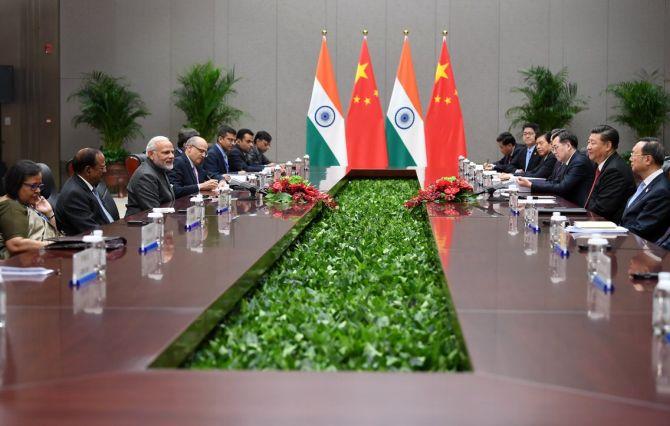
Firstly, the nature of globalisation is changing: Being first-to-market with a product is becoming more important, just as pure labour cost arbitrage is no longer the key.
Thus, intra-regional trade chains are gaining ground over the shipment of goods across trans-oceanic expanses. Also, Asian economies continue to be fast-growing, with the lion's share of the future potential in trade, tourism, cross-border investments and services.
It, therefore, makes economic sense for India to intensify its 'Act East' policy to engage even more intensively with China, Japan, Korea and the ASEAN nations.
Secondly, and as a consequence of the above trend, India and China must aim at an early conclusion of the Regional Comprehensive Economic Partnership (RCEP) plurilateral trade treaty.
This will create a free-trade zone with over 40% of the world's population and one-third of its GDP, with Asia's two largest countries having duty-free access to each other's markets.
One way to mitigate our fears of Indian markets being 'swamped' by Chinese goods is to agree upon a transition period during which duties on imports from China can be reduced step by step.
The long-term gains in opening these two giant markets to each other would more than offset the import duty losses for India, or the trade profits foregone for China.
Thirdly, Sino-Indian interaction in our neighbouring countries has been dominated by a narrative of rivalry.
For two large powers living cheek by jowl, some competition is inevitable. But surely, we could also experiment with joint projects that create value for the peoples of Myanmar, Sri Lanka, Nepal or the Maldives, showing that playing India and China off against each other is not the only game in town.
Finally, India and China must collaborate in scientific and technological research in 'blue-sky' areas, where benefits are both mutual and global.
Climate change, epidemic disease, chaotic urbanisation and environmental pollution present problems that affect both countries seriously and have global consequences.
Sino-Indian partnership ventures could create welfare for millions of people and accelerate the build-up of scientific and technological capacity worldwide.
Remember, even in the darkest phase of the Cold War, the United States and the Soviet Union cooperated in landmark space projects. Similar win-win outcomes from the India-China engagement process can also bring positive and multiplier effects in public perceptions -- a result that is both important and long overdue.
Ravi Bhoothalingam is an independent director on corporate boards and Honorary Fellow, Institute of Chinese Studies, Delhi.

